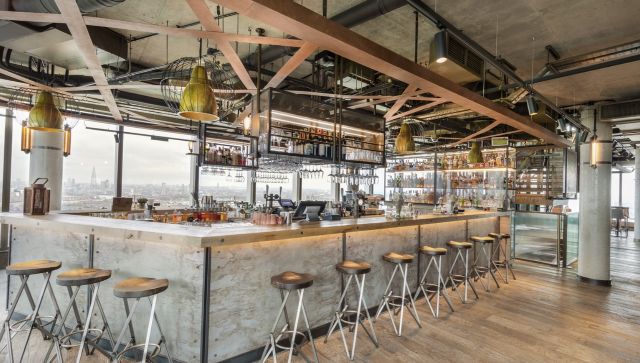The industrial style has gained great popularity in recent years for its raw, functional and characterful aesthetic. Inspired by the old factories and warehouses of the 20th century, this style has evolved to become one of the most sought after trends in decorating and interior design.
In this guide, we will reveal all the secrets of industrial style, from its origins to how to apply it in your home or business. Get ready to transform your spaces with the authenticity and charm of this unique style.
Table of Contents
- Origin and History of Industrial Style
- Main Characteristics of the Industrial Style
- Colors, Materials and Textures
- How to Apply Industrial Style in the Home
- Industrial Style Variations and Fusions
- Common Mistakes and Challenges
- Inspiration and Real Examples
Origin and History of Industrial Style
Industrial style has a fascinating history that dates back to old factory buildings and warehouses. Discover how this originally functional aesthetic transformed into one of the most popular trends in contemporary design.
A style born in the factories
Industrial style has its roots in 20th century industrial buildings, when factories and warehouses began to transform into residential and commercial spaces.
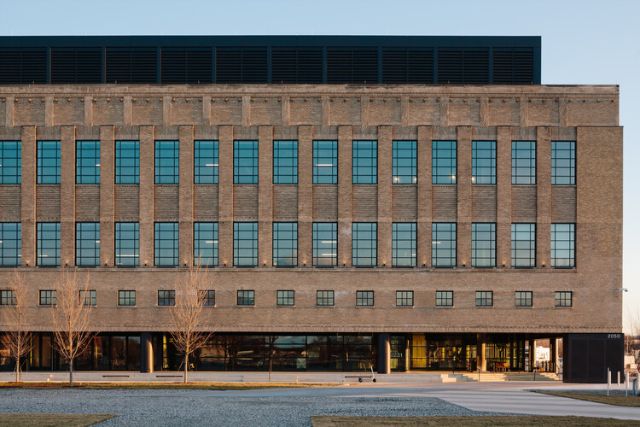
Originally, these places were used for the production and storage of goods, but over time, architects and designers began to see the potential of these industrial spaces as housing and offices.
The bare structures, with their large windows, exposed pipes and robust materials, were seen as an innovative and attractive way to breathe new life into abandoned buildings.
Evolution towards decorative aesthetics
From these functional and utilitarian spaces emerged a unique aesthetic that has gained popularity in contemporary decorating. Over time, what began as a need to repurpose old industrial buildings evolved into a decorative style prized for its raw beauty and functionality.
This style is characterized by the use of untreated materials and exposed structures, giving it a rugged and unique character, which in turn conveys a sense of history and authenticity.
Main Characteristics of the Industrial Style
The industrial style is distinguished by the use of untreated materials and exposed structures, which gives spaces a unique and bold personality. Here are the key elements to incorporate this aesthetic into your home or workspace.
Key elements of the industrial aesthetic
This style is distinguished by the use of raw and natural materials, such as metal, exposed brick, cement and reclaimed wood. These materials are combined with simple lines and weathered surfaces, creating a rugged, characterful environment. The rustic textures of these materials are key to providing a sense of authenticity and functionality.
Proportions play an essential role in this style. High ceilings and large windows, common in industrial buildings, allow natural light to flood the space, creating an open and airy atmosphere. In addition, wide spaces without rigid divisions reinforce the idea of freedom and functionality. Metal elements, such as beams and supporting structures, not only serve as functional components, but also act as decorative pieces that provide solidity and a sense of durability.
The combination of these materials and proportions defines the industrial aesthetic, where beauty lies in simplicity and the exposure of what is normally hidden, creating environments with great personality and a unique atmosphere.
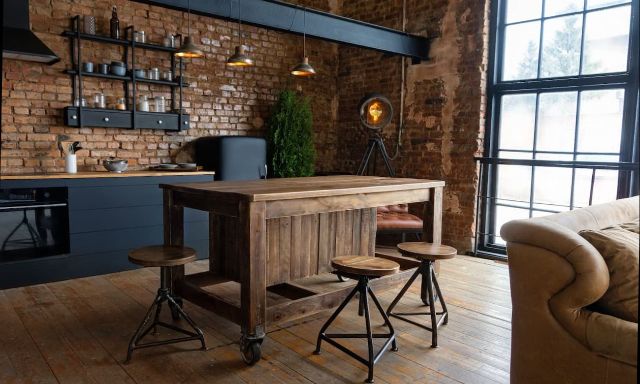
When style also shapes spaces
Industrial style is not only reflected in the décor, but also shapes the structure and layout of spaces. Often, industrial homes retain original architectural elements such as unfinished brick walls, exposed pipes and exposed steel beams, giving them a rustic, authentic feel. Large glass windows, typical of this style, let in plenty of natural light, creating bright, airy rooms.
In addition, industrial spaces are often designed to maximize the feeling of spaciousness. Instead of having closed walls, open and fluid solutions are preferred, such as metal shelving, glass panels or movable walls, which allow areas to be separated without compromising the sense of visual continuity. This type of layout encourages open and free circulation through the space, creating an atmosphere of freedom and flexibility that is essential for this style.
How to start if you are a beginner?
If you are new to industrial style, don’t worry. The key is to choose natural and exposed materials such as cement and iron. Opt for simple but sturdy furniture, and use neutral colors, such as gray and black, for walls and furniture. Adding industrial decorative elements, such as metal lamps and iron shelving, will allow you to approach this style without fuss.
Comparison with other styles
While industrial style shares some elements with vintage style, there are notable differences. While vintage style tends to focus on the nostalgia of antique objects, industrial style focuses on the reuse and transformation of building materials and machinery. Both styles share a raw, functional aesthetic, but the industrial style is more austere and focused on the structure of the space.
Colors, Materials and Textures
Industrial style relies on a dark color palette and robust materials. Learn how to combine these elements to create a unique environment, full of texture and contrast.
Most common color palettes
The most representative colors of the industrial style are dark tones, such as grays, blacks and oxides, which bring a raw and modern atmosphere. These tones are often combined with accents in earth tones, such as brown and beige, which help soften the harshness of the dark tones and add warmth to the space.
This neutral palette not only creates a cozy ambiance, but also provides a perfect base upon which to add more vibrant or contrasting decorative details, such as metallics or more intense colors in furniture and accessories.
Ideally, stick to a palette of 4 or 5 colors to keep things simple.

Materials with identity
Materials such as cement, brick, iron and recycled wood are the fundamental pillars of the industrial style. These materials are not only functional, but also have a strong visual charge that gives them character.
Cement and exposed brick bring a sense of robustness and rusticity, while iron and metal give a touch of modernity.
Wood, especially recycled wood, is ideal for softening the harshness of these colder materials, adding warmth and creating a visual balance between industrial and natural.
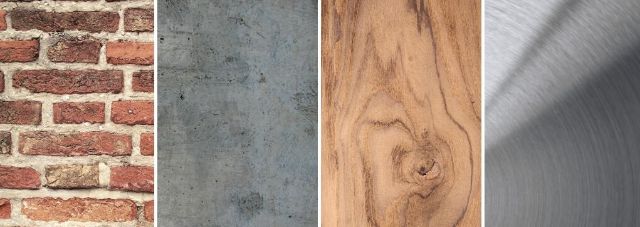
Textures and visual contrasts
Contrasting textures is one of the keys to achieving a successful industrial environment. Weathered, rough and rough surfaces are essential to bring depth and character to a space. Polished metal, rough concrete and weathered wood combine to create a visually appealing and balanced environment.
These contrasts not only enhance the aesthetic, but also reinforce a sense of authenticity, a key characteristic of industrial style. The variation in textures creates a dynamism that invites you to explore and enjoy every corner of the space.
Decorative objects with visual weight
Industrial style is not only about the structural materials, but also about the decorative objects that complement the design. Large wall clocks, aged metal pieces, antique pulleys and other functional objects transformed into decorative pieces are essential to complete the industrial look.
These elements not only serve a practical function, but also add strong visual weight, creating points of interest in the room. Each decorative object becomes a unique piece that not only adorns the space, but also reflects the personality of the industrial style.
How to Apply Industrial Style in the Home
Industrial style isn’t just about materials, it’s about how to transform spaces. Discover how to apply this aesthetic in every corner of your home, from the kitchen to the living room, without losing functionality.
Planning and practical adaptations
Proper planning and practical adaptations are essential to achieving a functional and aesthetically appealing industrial space. From the layout of the space to the selection of materials, every decision influences how the industrial style is perceived and experienced.
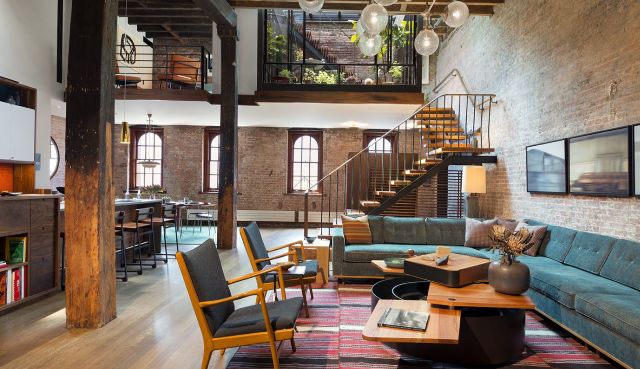
Space distribution and material selection
When beginning to design an industrial style home, it is essential to plan the space with attention to the fundamental characteristics of this style. High ceilings, large windows and open spaces are common in industrial buildings, but if you are working with a smaller home, it is possible to adapt these features strategically. For example, you can use large mirrors to reflect natural light and give a sense of spaciousness, or integrate modular furniture that optimizes storage without taking up too much space.
When choosing materials, look for those that highlight the industrial essence, such as metal, cement or exposed brick, but without overloading the space. The key is to select materials that maintain the industrial aesthetic, but also favor an efficient layout.
Adapting to small homes without losing functionality
Although industrial style is commonly associated with large lofts and open spaces, it is entirely possible to apply it to small homes. The key is to maintain functionality without sacrificing aesthetics or overloading spaces.
Opt for modular pieces that offer additional storage without compromising design. For example, a dining table with hidden storage or recycled iron and wood shelving can be very useful.
You can use neutral colors such as grays, blacks and earth tones to keep the space from looking smaller, while metallic or wood accents can add the signature personality of industrial style without cluttering the room.
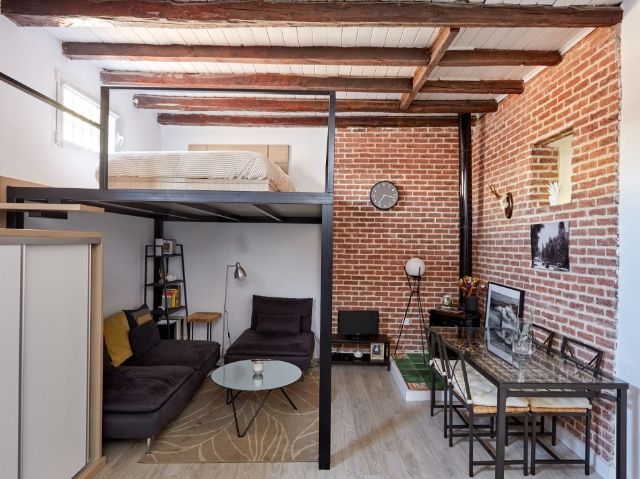
The important thing is to create a balance where each element has its purpose and integrates perfectly into the small space.
Create warmth and soften the rawness of the industrial style.
Industrial style can sometimes be somewhat cold due to its harsh materials and raw aesthetic. However, it is possible to soften this harshness and incorporate warmth into the environment without losing the authenticity of the style.
One effective way to do this is by adding linen cushions, natural fiber rugs and reclaimed wood furniture. These details add softness, comfort and a cozier feel, which helps to balance the concrete and metal surfaces.
Warm light fixtures or exposed bulbs with a dim light can also create a cozier atmosphere without compromising the industrial essence of the space.
Low-budget tips for achieving the industrial look
Industrial style doesn’t have to be expensive. Even on a limited budget, you can achieve the desired look.
A great way to do this is to look for secondhand furniture or recycled pieces that you can restore or customize to fit your vision. Decorative elements such as exposed light bulbs, metal light fixtures, or recycled wood shelving can be affordable options that add an authentic industrial touch without a large investment.
Recycled materials not only serve a practical function, but also add character and authenticity to the space, reinforcing the industrial style in a unique way. The key is to find pieces that align with the industrial concept, but fit your available resources.
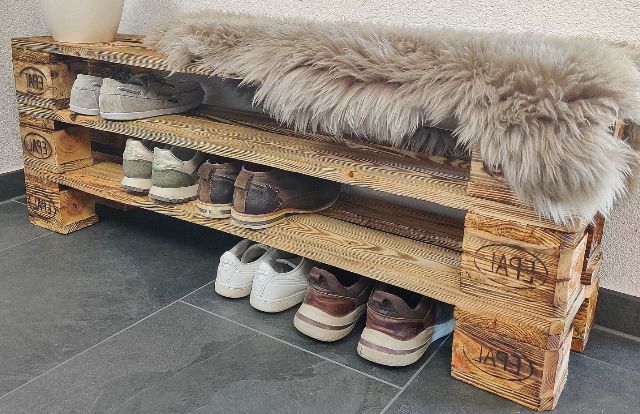
By following these tips, you can effectively and functionally integrate industrial style into any space, regardless of size or budget.
Application by room
Industrial style is extremely versatile and can be adapted to every room in a home, from common areas such as the living room and kitchen, to more intimate corners such as the bedroom or bathroom.
Living and dining room
In these spaces, the industrial style manifests itself through sturdy metal and wood furniture. Opting for a large dining table made of recycled wood with an aged finish, accompanied by iron or worn leather chairs, will bring a rustic and contemporary touch.
Open metal shelving can fill the walls, offering visible and functional storage.
The use of oversized mirrors and metal frames reinforces the feeling of spaciousness without losing the industrial-era aesthetic.
Kitchen
The kitchen, being a highly functional space, can benefit greatly from the industrial style.
Open metal and wood shelves not only offer an industrial touch, but also allow easy access to kitchen utensils.
Stainless steel appliances and cement or marble surfaces add a modern yet rugged texture.
In terms of colors, metallic, gray and black tones predominate, while wood surfaces add a touch of warmth to the environment.
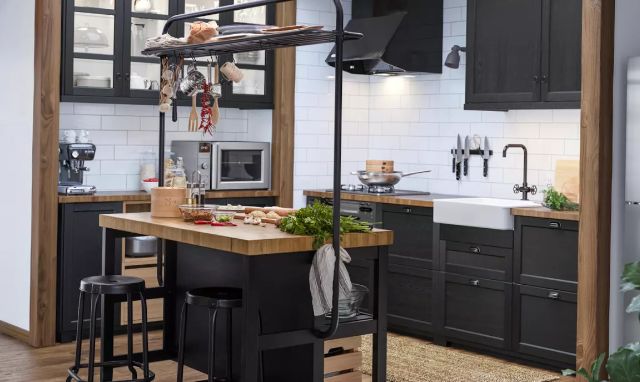
Bedrooms
Although the industrial style is usually associated with large, open spaces, it can also be applied in bedrooms, even small ones.
For the bed can be exposed metal base with a recycled wood headboard or directly exposed brick wall. Regarding textiles, materials such as linen or wool in neutral or dark tones are recommended.
Soft lights, such as iron table lamps or floor lamps in matte black, provide ambient lighting that highlights the industrial textures of the room.
Decorative details, such as large mirrors with metal frames and abstract artwork, add character and personality to the space.
Bathrooms
The bathroom, while generally the smallest space in the home, can take on industrial style in surprising ways.
Exposed brick or polished concrete walls create a raw, authentic feel, while ceramic sinks in geometric shapes or stainless steel become the centerpiece.
Antiqued brass or copper faucets and open metal shelving for towels or bath products are common practices that add a touch of sophistication without losing the essence of industrial style.
Add dark metal wall sconces, which provide a warm light to create a relaxing atmosphere.
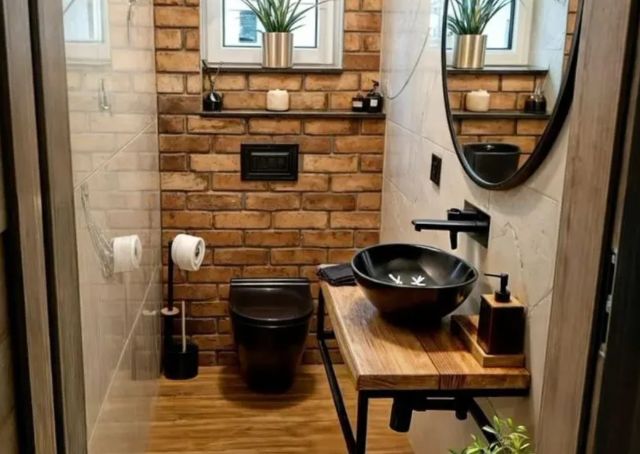
Lighting as an expressive resource
Lighting is essential in the industrial style, as it not only serves a practical function, but also contributes to the overall ambience of the space.
Choose the type of light according to the effect you want to achieve. Warm light is mainly used to soften the cold surfaces of materials such as metal or concrete. Cold light, on the other hand, can accentuate the hardness of these materials.
By placing light sources correctly, you can highlight key elements of the space, such as a piece of artwork, a special piece of furniture or an architectural feature, such as an exposed brick wall.
Industrial-style light fixtures are one of the key defining pieces of this type of décor, combining functionality and raw aesthetics. Inspired by factory and workshop lighting, these lamps stand out for their metal structure, aged finishes and simple geometric shapes.
Recommended products

In Stock, delivery in 24/48h
15.89 £
Elegant Lamp for Artwork in Black
View product
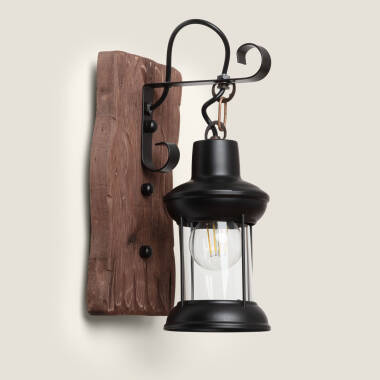
In Stock, delivery in 24/48h
21.19 £
Fanala Wall Lamp
View product
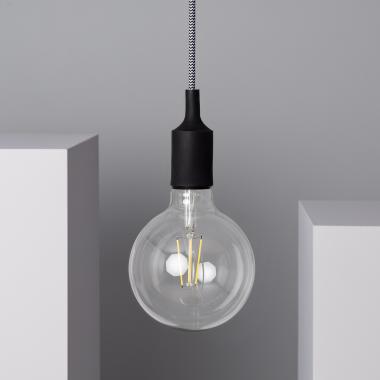
In Stock, delivery in 24/48h
5.19 £
Rubik Pendant Lamp
View product
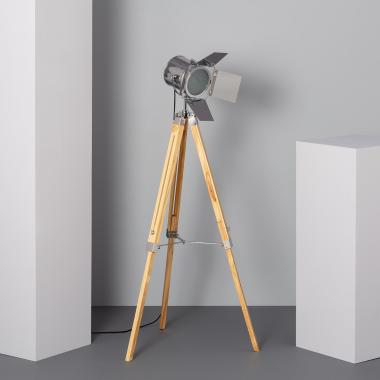
In Stock, delivery in 24/48h
81.99 £
Bioskop Floor Lamp
View product
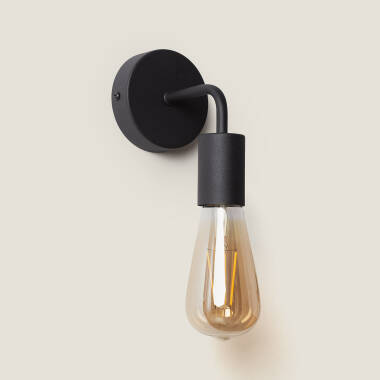
In Stock, delivery in 24/48h
9.99 £
Jayso Wall Lamp
View product
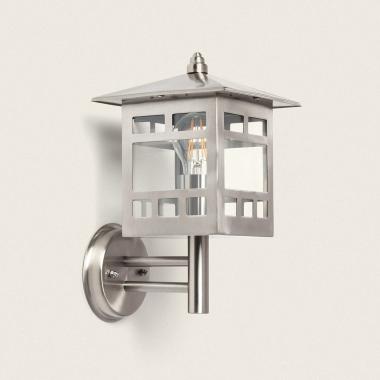
In Stock, delivery in 15-20 days
19.29 £
Idun Wall Lamp
View product
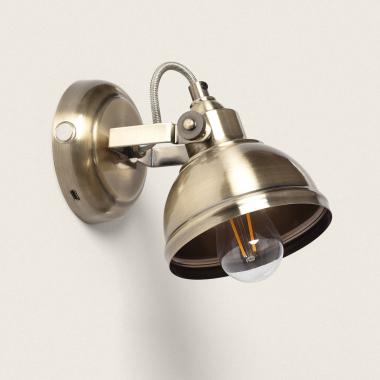
In Stock, delivery in 16-21 days
24.49 £
Brass Wall Lamp with USB Rechargeable Battery
View product
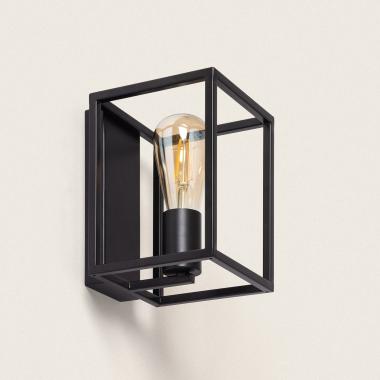
In Stock, delivery in 16-21 days
14.19 £
Crate Wall Lamp in Black
View product
Industrial Style Variations and Fusions
Although the industrial style is already very versatile in essence, its variations and fusions offer a wide range of possibilities. Explore the different ways to adapt this style to your tastes and needs.
Modern Industrial
The modern industrial style takes the essence of classic industrial but makes it cleaner and more refined. It uses less metal and more smooth, glossy finishes, and goes for a softer color palette, with neutral tones and light wood accents.
Rustic industrial
The rustic industrial style fuses industrial style with natural materials such as aged wood, creating a warm and cozy atmosphere. This style is ideal for those who wish to incorporate the industrial essence without losing the warmth of the natural elements.
Minimalist industrial
Industrial minimalism focuses on the essentials. Spaces are more uncluttered and furnishings are kept to a minimum, but without losing the character of industrial materials. This style is ideal for those who want a functional yet aesthetically stunning space.
Scandinavian-industrial style
The Scandinavian-industrial style fuses the functionality and warmth of Nordic design with the raw aesthetic of industrial. Soft colors, wood surfaces and clean lines combine perfectly with industrial materials such as metal and concrete.
Fusion with modern furniture
This style can be combined with contemporary furniture, such as designer sofas or glass tables. This mix creates a balanced, modern and functional atmosphere, without losing the industrial essence.
Other popular combinations
It is also possible to find fusions with other popular styles such as boho, classic or mid-century. Each combination brings a unique dimension to the industrial style, creating personalized spaces full of character.
Common Mistakes and Challenges
One of the most common mistakes when decorating with industrial style is overloading elements. By incorporating too many objects or furniture, you run the risk of losing the minimalist essence that characterizes this style.
On the other hand, it is easy to create an excessively cold or impersonal atmosphere if the materials are not properly balanced. The use of metals and cement, for example, can be excessive if not softened with warm elements such as wood or textiles. To avoid this, it is essential to focus on the functionality of each piece, making sure that each element in the space has a reason for being, both in terms of use and aesthetics.
A balanced and thoughtful approach will help maintain the authenticity of the style without sacrificing comfort and visual harmony.
Inspiration and Real Examples
Get inspired by real examples of industrial lofts and commercial spaces that have managed to capture the essence of this style. See how it is applied in real life to transform ordinary spaces into unique places.
Industrial lofts: visual references
Industrial lofts are the ultimate example of this style. Open spaces, with high ceilings, large windows and exposed materials such as brick and metal, represent the essence of industrial style at its best.
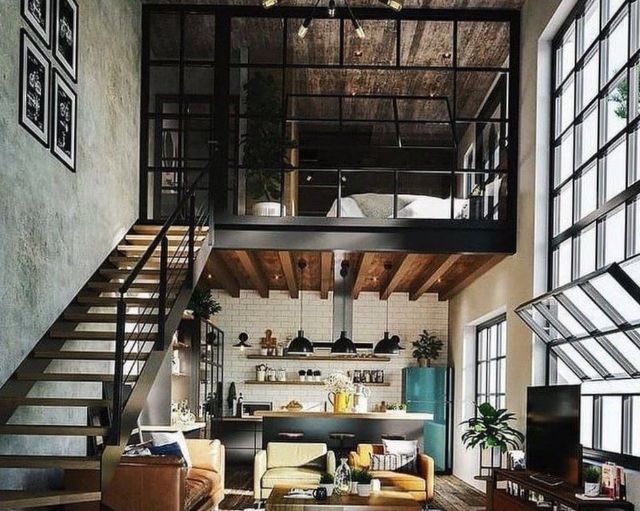
Application in commercial spaces
The industrial style is also applied to bars, stores and cafes, where decoration plays a key role in creating a unique atmosphere. Metal shelves, hanging lamps and concrete floors are some of the elements that define these spaces.
